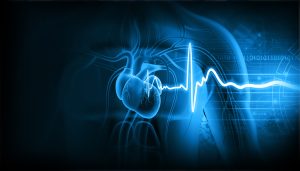Articles / Ehlers-Danlos syndrome – red flags for GPs

0 hours
These are activities that expand general practice knowledge, skills and attitudes, related to your scope of practice.
0.5 hours
These are activities that require reflection on feedback about your work.
0 hours
These are activities that use your work data to ensure quality results.
These are activities that expand general practice knowledge, skills and attitudes, related to your scope of practice.
These are activities that require reflection on feedback about your work.
These are activities that use your work data to ensure quality results.
While rare, Ehlers-Danlos syndrome (EDS) can be life-threatening, with some patients experiencing an arterial dissection, aneurysm rupture, or sudden death before it is identified.
Ehlers-Danlos syndrome is a group of heritable connective tissue disorders with 13 currently known subtypes — 12 of which can be diagnosed through genetic testing. Understanding the key red flags can help ensure patients are diagnosed and managed before a potentially life-altering – or even fatal – complication occurs.
Dr Kunal Verma, Australia’s first dual trained cardiologist and geneticist, explains…
Hypermobility is the characteristic feature across all EDS subtypes, but it’s important to remember this is a physical trait like height and eye colour. There are billions of people in the world who would be hypermobile according to the normal distribution of joint mobility, so in itself this is not a marker of something serious.
Hypermobility accompanied by any of the following features is more suspicious of EDS.
1. Very significant musculoskeletal problems
These can include clubfoot requiring surgery, extreme weakness and myopathy from early life, and severe scoliosis requiring surgical intervention in childhood or adolescence.
In cases where surgery for idiopathic scoliosis is appropriate, for example, it should be a red flag to ask why this young person’s back has become so scoliotic? Could this be a connective tissue disorder?
2. Vascular and internal organ complications
Aneurysms, dissections and internal organ rupture occur more commonly in people with vascular EDS.
3. Unusual ocular problems in childhood or young adulthood
Examples include severe myopia, lens dislocation, unexplained retinal detachment, or extremely thin corneas prone to rupture.
4. Poor wound healing
Fragile, friable skin can be very difficult to suture, and patients may experience delayed or failed wound healing.
Hypermobile EDS (hEDS) is the most common subtype—and the only one that cannot be diagnosed through genetic testing because we don’t yet know which specific gene is involved. It is probably more common than previously thought; most recent estimates are a prevalence of around 1 in 500 people.
People with hypermobile EDS don’t generally have serious eye, musculoskeletal, blood vessel or heart issues. They do however have a constellation of pathologies that can be identified on imaging, along with some common symptoms.
These include:
While hypermobile EDS doesn’t typically result in life-threatening complications, it significantly impacts quality of life and often takes decades to diagnose, causing considerable distress for patients and families.
Classical EDS occurs in about 1 in 10,000 people. While similar to hypermobile EDS, people with classical EDS tend to scar very badly. Their skin is marked by very thin scars you can almost see through, sometimes called ‘cigarette paper scarring.’
Vascular EDS is one of the more serious type of Ehlers-Danlos, with significant risk of sudden death, pregnancy complications, and surgical complications (such as bowel rupture during a gastroscopy).
People with vascular EDS often have near-translucent skin you can see their veins through, very tight facial skin, a characteristic “pinched nose” and very brittle connective tissues.
The severity of vascular EDS varies widely: some patients experience life-threatening events early in life, while others only discover they have it after another family member is diagnosed—having come through high-risk situations (like pregnancy or surgery) unscathed themselves.
Management involves strict blood pressure control and careful consideration before patients undergo any procedures.
Women with vascular EDS are advised against falling pregnant due to the well-documented risks of maternal and foetal death during pregnancy. Some centres can offer pregnancy care to patients with vascular EDS who choose to carry a pregnancy.
EDS diagnosis is best made through a specialist genetic service. While GPs can order EDS genetic testing, there’s no Medicare rebate and they typically cost $1,000-$2,000.
Specialist clinics have funding to run genetic tests. They can also conduct a thorough assessment to screen for other genetic connective tissue disorders (such as Marfan syndrome), order customised genetic panels, and provide genetic counselling.
This involves pre-test counselling to discuss the implications of a positive result and help people decide whether to go ahead, followed by post-test counselling to explain the results. If genetic variants are identified, relatives may be offered testing.
In patients with hypermobility, consider referral to a specialist genetic service if they have a personal or family history of any of the following high-risk features:
Importantly, specialist genetics service Australia-wide are only able to accommodate patients with high-risk features (above). Patients without high-risk features may still have EDS, but it is probably the hypermobile EDS type that carries a lower risk of serious life-threatening complications.
Diagnosis is challenging and sometimes takes decades. Many patients report they have been told their symptoms are “growing pains” or psychological, leading to significant distress. Getting a name for the condition often provides relief.
GPs may be involved in co-ordinating care between various specialties. It’s important to connect patients with EDS-aware allied health professionals (physiotherapists or exercise physiologists) who can provide ongoing care.
Key takeaways
Helpful resources:
Dr Verma has a dedicated phone line to support GPs across Australia. This is his Australia-wide service for health professionals who would like advice on cardiac genetics including heritable connective tissue disorders such as Marfan and Ehlers-Danlos, a history of unexplained & serious cardiovascular pathology, and critically unwell patients (cardiac arrest, cardiogenic shock) who may benefit from urgent genetic testing or storage of a DNA sample.
Doctors Line: 03 7036 0990
During business hours, the team will send him an SMS and he’ll return your call as soon as possible.
Based on this educational activity, complete these learning modules to gain additional CPD.

Allergen Introduction – Practical Tips for GPs

Oral Contraception Update

What do we do With High Triglycerides?

An Update on Heart Failure in Primary Care

Very overestimated
Moderately/slightly overestimated
Quite accurate
Moderately/slightly underestimated
Very underestimated
Listen to expert interviews.
Click to open in a new tab
Browse the latest articles from Healthed.
Once you confirm you’ve read this article you can complete a Patient Case Review to earn 0.5 hours CPD in the Reviewing Performance (RP) category.
Select ‘Confirm & learn‘ when you have read this article in its entirety and you will be taken to begin your Patient Case Review.





